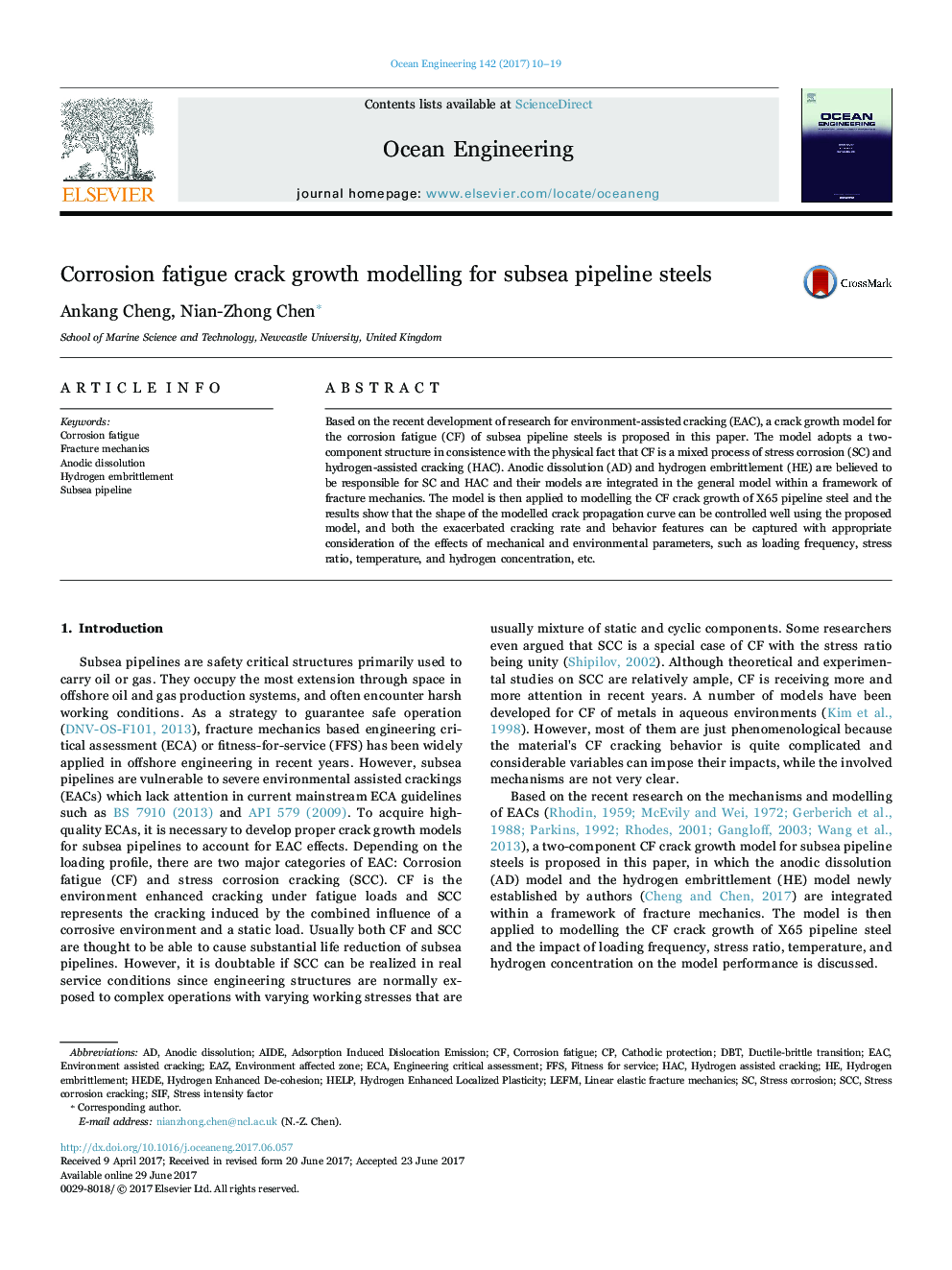| Article ID | Journal | Published Year | Pages | File Type |
|---|---|---|---|---|
| 5474346 | Ocean Engineering | 2017 | 10 Pages |
â¢A crack growth model for the corrosion fatigue (CF) of subsea pipeline steels is proposed.â¢Models of anodic dissolution (AD) and hydrogen embrittlement (HE) are integrated within the frame of fracture mechanics.â¢The proposed model bridges the physics of CF and the CF crack growth behavior.â¢The proposed model characterizes both environmental and mechanical conditions.
Based on the recent development of research for environment-assisted cracking (EAC), a crack growth model for the corrosion fatigue (CF) of subsea pipeline steels is proposed in this paper. The model adopts a two-component structure in consistence with the physical fact that CF is a mixed process of stress corrosion (SC) and hydrogen-assisted cracking (HAC). Anodic dissolution (AD) and hydrogen embrittlement (HE) are believed to be responsible for SC and HAC and their models are integrated in the general model within a framework of fracture mechanics. The model is then applied to modelling the CF crack growth of X65 pipeline steel and the results show that the shape of the modelled crack propagation curve can be controlled well using the proposed model, and both the exacerbated cracking rate and behavior features can be captured with appropriate consideration of the effects of mechanical and environmental parameters, such as loading frequency, stress ratio, temperature, and hydrogen concentration, etc.
